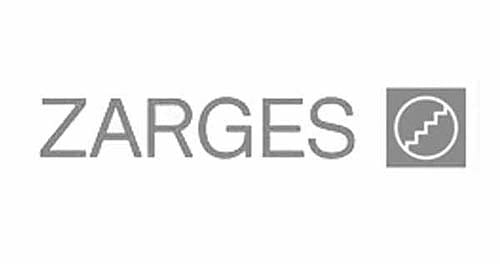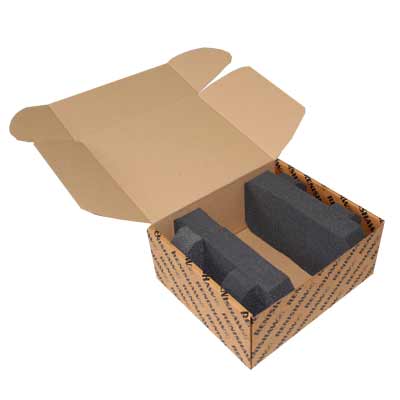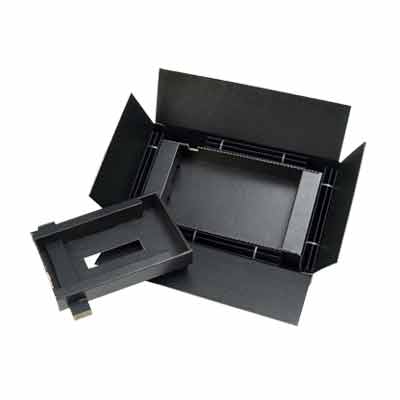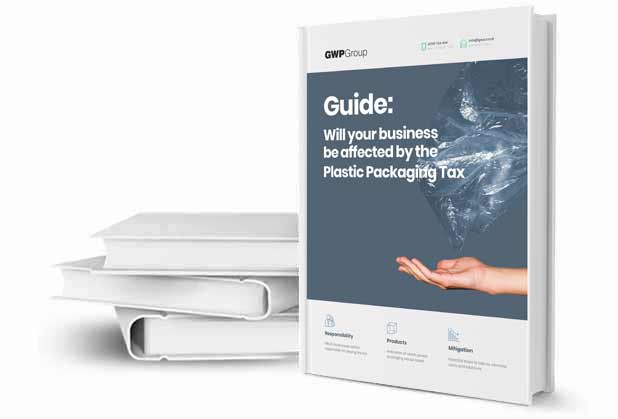The Plastic Packaging Tax
Will your packaging be affected by the new legislation?
Even if your business will not be directly affected by the HMRC’s Plastic Packaging Tax legislation, if it uses specific forms of plastic packaging, then you are highly likely to see some form of impact.
Suppliers potentially passing on some or all of the additional costs imposed by the tax. Demand for (and therefore prices) is possibly increasing for packaging with recycled content, and businesses are scrambling to ensure a consistent supply and costs. All of this could directly or indirectly affect your business.
Whilst there are several ways to reduce the impact or avoid the tax on plastic packaging, the first step is to see if the products you use will be within the scope of the tax.
As such, this guide covers:
- A brief overview of whether your business will directly be liable for the tax.
- Any product exemptions.
- Considerations regarding mixed material packs.
- And much more!
Contents
Introduction
The who, the what, and the when
Before jumping into the details of which businesses and products are affected, it is helpful to provide a bit of background information on the new legislation.
The Plastic Packaging Tax, as it is known, was introduced from 1st April 2022, and has been implemented by the HMRC (Revenue and Customs). It will take the form of legal legislation. This is different to the Packaging Waste Regulations (which have now been replaced with the Extended Producer Responsibility legislation), and means sanctions and penalties for non-compliance could potentially be more significant.
In essence, the tax will see a £223.69 per tonne levy added to all qualifying plastic packaging. The keyword here is qualifying, as not all products deemed to be plastic packaging will be included in the scope of the tax.

The tax has been introduced to provide a clear economic incentive for businesses to use recycled plastic material in their packaging. With the tax on virgin materials making them less cost-effective, and the demand for recycled material leading to increased investment in the required infrastructure, ultimately, it should help reduce plastic waste being sent to landfill and/or being exported.
For further information on this legislation, you can see our beginner’s guide to the Plastic Packaging Tax here.
Who has to pay the tax?
Which businesses will be responsible for paying the Plastic Packaging Tax?
Before looking at the packaging products that are within the scope of the tax, it is worth identifying the businesses that will potentially be required to pay the tax.
As such, there are three main groups that the new legislation affects.
Firstly, any businesses that import plastic packaging and/or components used in packaging products will likely be subject to the tax.
Any businesses in the UK that manufacture plastic packaging (and again, components used within packaging) may be required to register and pay.
And finally, any business which performs the “last significant modification” to the packaging (including changes to its shape, structure, thickness, weight, or appearance) may also be required to pay the tax. This final point is also used to decide which business will be liable to pay if multiple manufacturers contribute to producing a product.

Exemptions from the tax
There are several exemptions where businesses may qualify for not having to pay the tax.
Firstly, the tax is only paid by businesses that import or manufacture more than ten metric tonnes of plastic packaging (whether within the scope of the tax or not) in 12 months.
Secondly, if the packaging or component is exported outside of the UK within 12 months from manufacture, then this is exempt from the tax.
Thirdly and finally, there is a separate list of exempt packaging and products which do not qualify under the tax. Please see the following section for more details.
What about single-use consumer packaging?
For single-use packaging, the government website indicates that:
For the purposes of the Plastic Packaging Tax, single-use consumer packaging is any single-use product that is designed to be used by a consumer or domestic user in performing one or more of the following functions in respect of goods or waste:
- Containment
- Protection
- Handling
- Presentation
- Delivery
These products would be use by the consumer rather than in the supply chain.
Plastic Packaging Tax exemptions
Which products are within the scope of the Plastic Packaging Tax legislation?
Even if your business will not be paying the Plastic Packaging Tax directly – and this will cover the vast majority of end users of plastic packaging – you may still feel the impact of the tax.
Put simply, some plastic packaging manufacturers may choose to pass on some or all of the additional costs to their customers.
As such, it is essential to ascertain which of the plastic packaging products you use will be within the scope of the tax. These are the products you may see price increases on.
Download our guide for a useful “decision tree” on whether your packaging is taxable or not.
Packaging with 30% recycled content
Any plastic packaging that contains at least 30% recycled plastic content will be exempt under the new legislation.
This can include both pre-consumer and post-consumer plastics that are recovered for recycling, but can’t include scrap materials and/or “regrind” materials that are used within the same process.
Medicinal products
Plastic packaging that is used in the immediate packaging (e.g., in direct contact with) medicinal products is exempt from the Plastic Packaging Tax.
A medicinal product – for the legislation – is defined as having properties for preventing or treating disease in human beings, or that may be used by or administered to human beings with a view to restoring, correcting, or modifying physiological function by exerting a pharmacological, immunological, or metabolic action.
It must be noted, however, that veterinary medicines are not exempt.

Packaging that is directly exported
Any plastic packaging that is intended for export can have the payment of the tax deferred for up to 12 months. If the packaging is subsequently exported within this period, then the liability for the Plastic Packaging Tax is cancelled altogether.
Alternative use
Any plastic packaging or component that is permanently set aside at production or importation for a non-packaging function is exempt from the tax.
Packaging filled at the point of sale (where packaging function is secondary to storage)
Plastic packaging that performs a secondary function – in this case, the ongoing storage of additional items – is exempt from the tax
The government definition of this is “Plastic packaging with the primary use of storing goods long-term”. This packaging is designed:
- As suitable to be filled when the goods it is intended to contain are sold.
- As suitable to be reused for the storage of the same or similar goods.
- So that its packaging function is secondary to its storage function.
This covers products including but not limited to toolboxes, first aid boxes, earphone cases, glasses cases, CDs, DVDs, video game cases, board game boxes, and so on.
This also includes products like protective cases that may include foam inserts (although not single-trip foams).
HMRC have confirmed that it does not extend to products such as tote boxes, returnable containers, and picking bins; however, as part of the supply chain, they are deemed as within the scope of the tax.
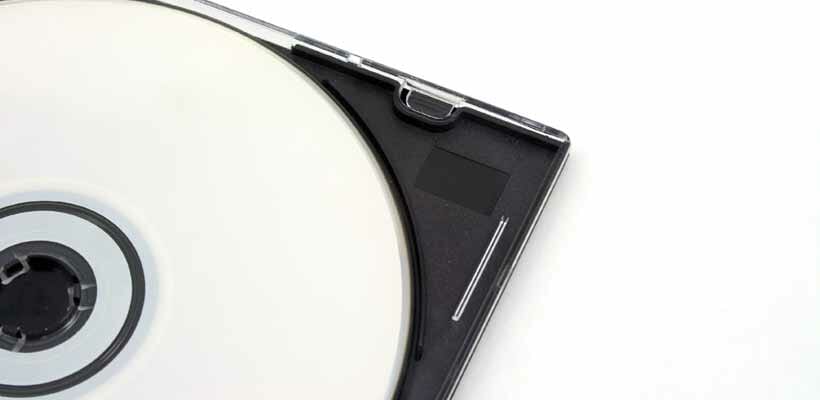
Packaging is an integral part of the goods
Any packaging that is designed to be an integral part of the product, is necessary to use the goods, and/or is discarded once the goods inside are used or by consumers, is exempt from the tax.
The definition, as provided by the government at the time of writing, states that a packaging component is an integral part of the goods where both the:
- Consumers cannot reasonably use goods without the component.
- Component is expected to be discarded once the goods (of which it is a part) are used, consumed, or discarded.
The exception to this is if the item is sold individually or empty as a packaging product.
Products that meet these criteria include printer or toner cartridges, tea bags, room deodorisers, lighters, water cartridge filters, perforated rice bags, etc.
Packaging primarily for reuse in presentation
Plastic items designed to be “used and reused” for the presentation of goods and which have been permanently set aside for this purpose before or as soon as being manufactured, are exempt.
This includes items such as display shelves, shop fittings, and sales presentation stands and POS.
Packaging for transporting goods into the UK
Packaging used to transport and handle multiple sales units or grouped packaging (e.g., prevent damage during transit), as well as road, rail, ship, and air containers being used for delivery of goods into the UK, are exempt.
However, where plastic transit packaging is used only to transport goods within the UK, or unfilled transit packaging is imported as a standalone item, the tax will apply.

Packaging used in aircraft, ship, or railway stores
Packaging components which are used in aircraft, ship, or railway stores for international shipping are not subject to the tax.
However, upon being released from the stores into the UK, they will then become subject to the tax.
Material considerations
How is mixed material packaging handled under the regulations?
Although there are fairly clear guidelines with regards to which products are exempt from the Plastic Packaging Tax, one potentially complicating factor is when packaging is made up of multiple, varied materials.
If the products are not exempt under the criteria set out in the previous section, then, in essence, the product will qualify for the tax if it contains more plastic by weight than any other material.
For example, a 10-gram packaging component that consists of four grams of plastic, three grams of aluminium, and three grams of cardboard would be considered as plastic packaging. This item would be taxable as a 10-gram product (e.g., at the full weight of the item, not just the plastic component).
Similarly, a packaging item that contained four grams of aluminium, three grams of cardboard and three grams of plastic would be classed as 10 grams of aluminium. It would therefore not be within the scope of the tax.
It is important to note here that two or more materials would only be considered a single component where they are manufactured together. Foam being glued into a box, for example, would be considered two separate components for the tax.

Bio plastics, biodegradable, and compostable materials
The past few years has seen a number of biodegradable, compostable, and bio-based plastics launched onto the market.
Despite their supposed environmental benefits, these materials are also within the scope of the new Plastic Packaging Tax legislation.
Summary
Mitigating the effects to your business
Whilst your business may not have to directly pay the new Plastic Packaging Tax, if you use any of the products which fall under the scope of the legislation, then you are likely to see price increases as some of all of the costs are passed on.
However, this provides an excellent opportunity to review your packaging use, and potentially move to more sustainable options (either using recycled content, or different materials entirely).
This should allow you to not only mitigate any price rises, but help to minimise the environmental impact of your business moving forward. This can even be a significant selling point or new and existing customers alike.
About the author

David is responsible for driving improvements in sustainability at GWP and the wider Macfarlane Group, having previously performed a similar role for Zero Waste Scotland.
Important note
Due to the sensitive and regulated nature of the topic this guide addresses (eco-friendly packaging) we have taken extra steps to ensure its accuracy and reliability. You can find out more in our content policy.
All information is, to the best of our knowledge, accurate and correct at the time of publication. Please also note that, as all scenarios vary, not all information contained in this guide may apply to your specific application. There may also be specific regulations or laws, not covered within this particular guide, that apply. Please view the list of sustainable packaging regulations for further details.
Share this article
Further reading
Featured products
Get in touch
Related guides
Plastic Packaging Tax 2025 – A beginner’s guide
Packaging Waste Regulations (2025 update)
What is the packaging extended producer responsibility (EPR)?
Packaging (Essential Requirements) Regulations 2015
Extended Producer Responsibility (EPR) fees explained
Analysis: Single trip packaging vs returnable packaging
Corrugated board grades explained: types of cardboard
Packaging Terminology: A glossary of terms and definitions
Recycling symbols on packaging: Explanation and free icon downloads







